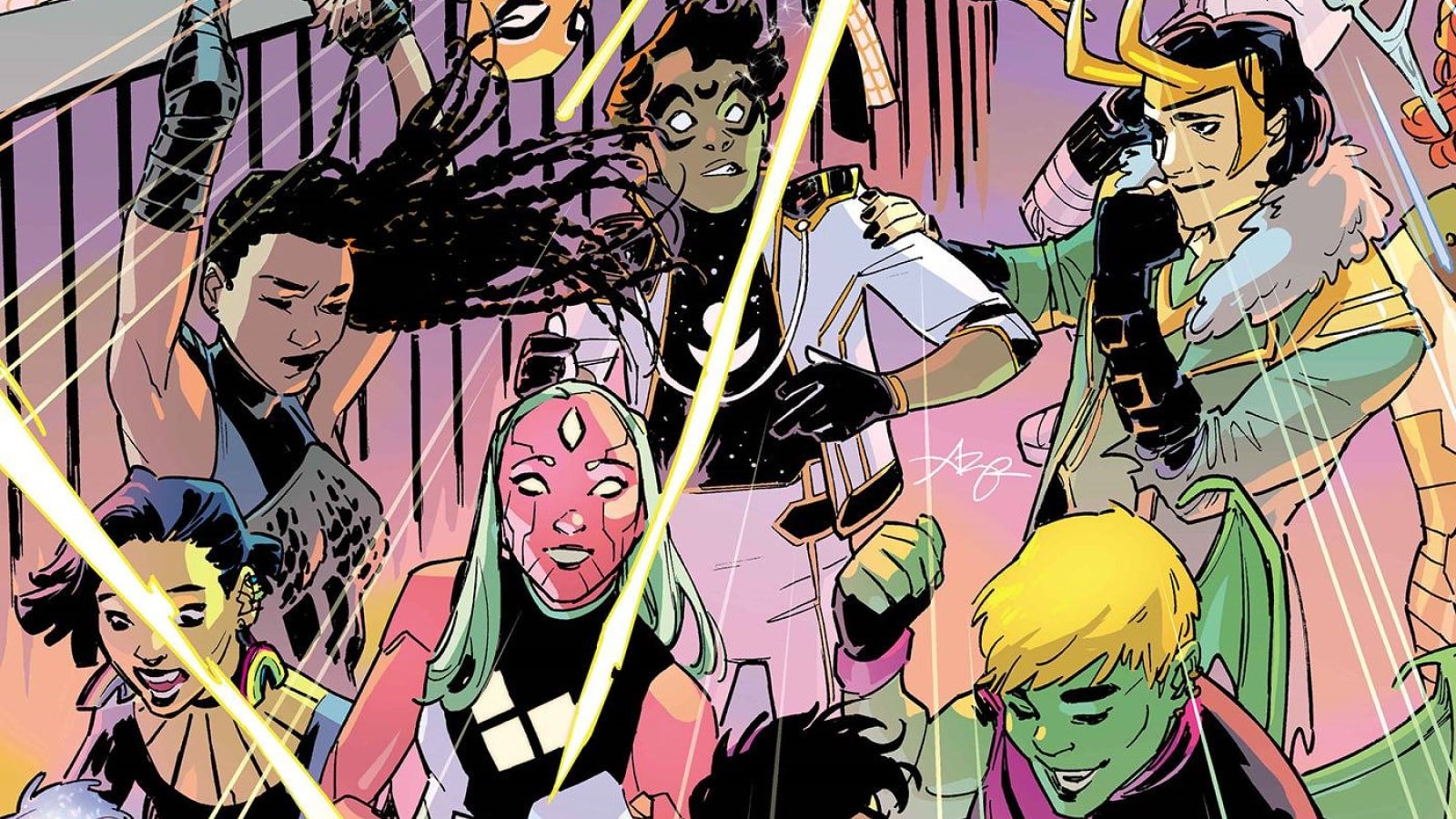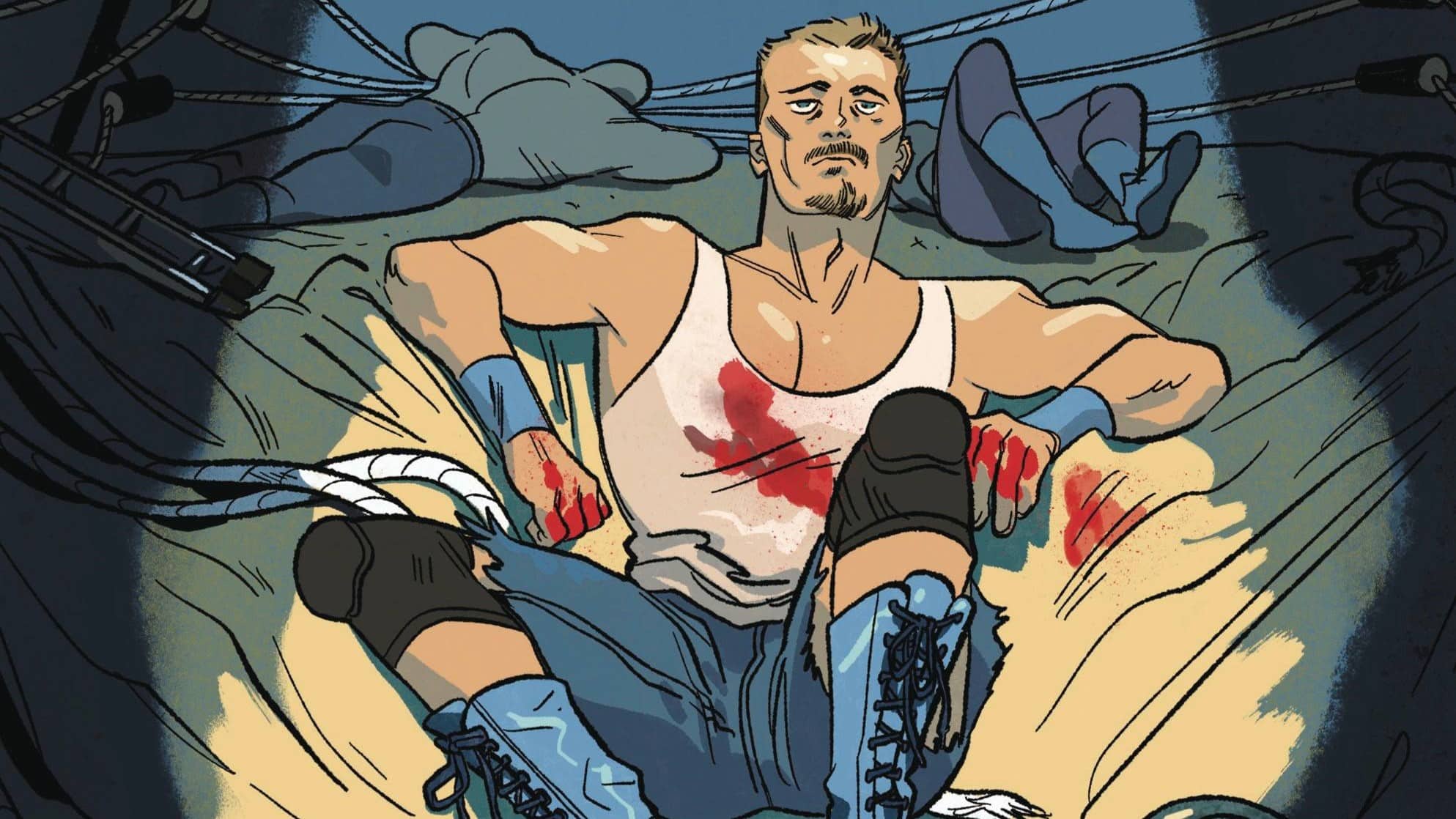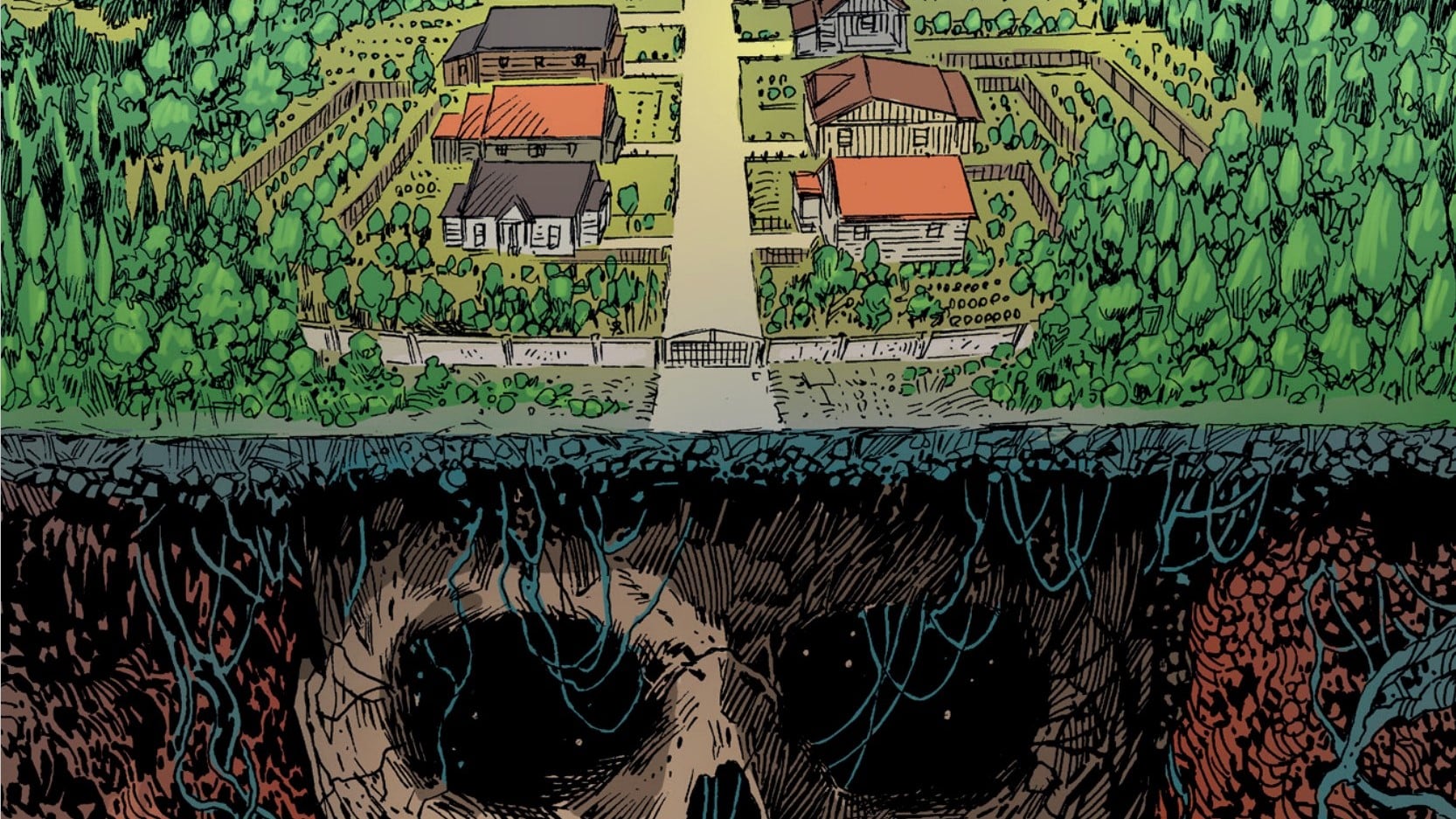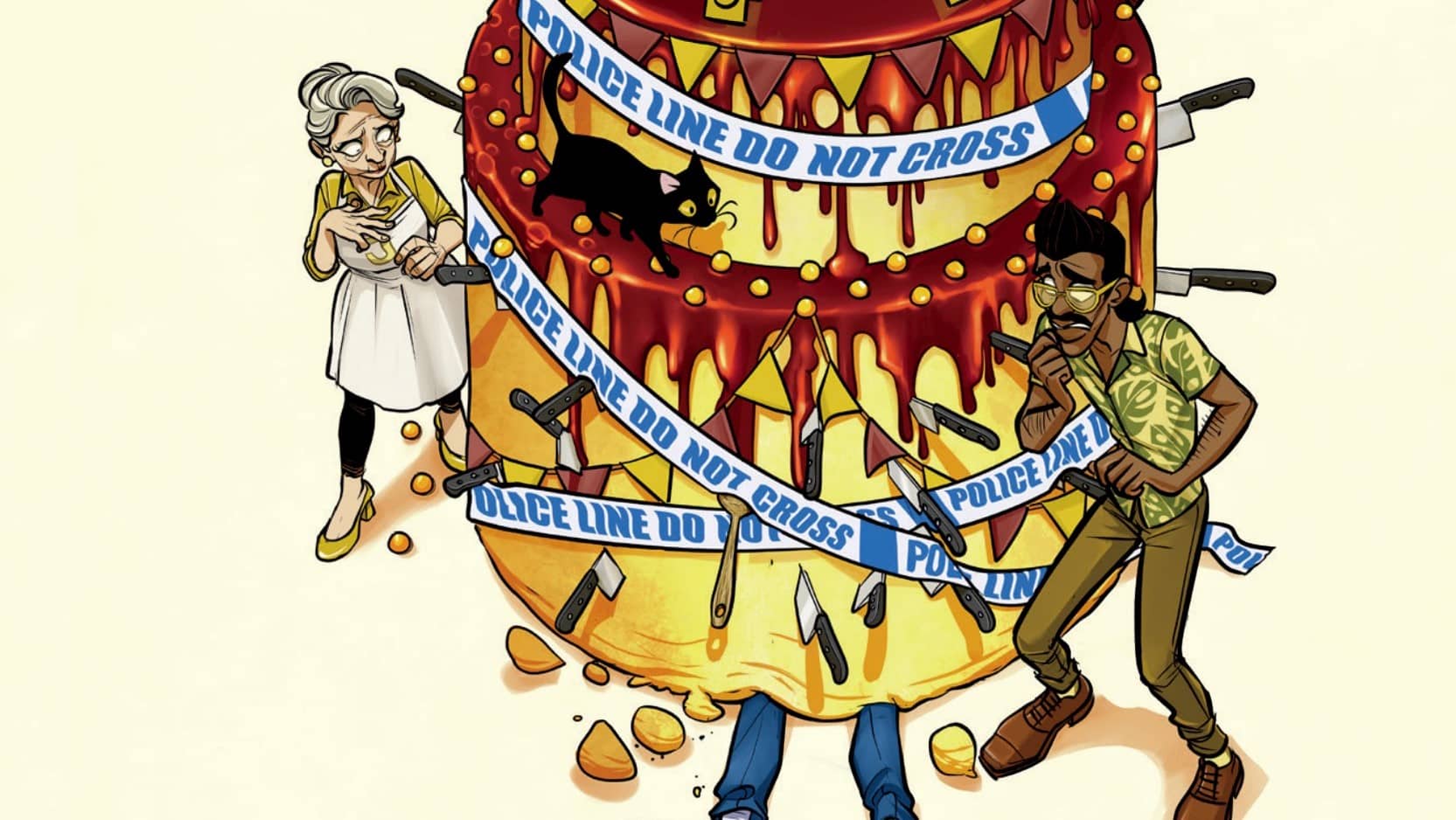Mutants have a new home in Krakoa. They have come from far and wide, from all backgrounds, to join a community of their fellow Homo Superior. But one Omega Mutant has ignored the call. In X-Men/Fantastic Four #2 Chip Zdarsky, Dodsons Terry & Rachel, Laura Martin, Dexter Vines and Karl Story come together to tell the tale of Franklin Richards, the son of Marvel’s First Family, as he chooses between his life on Yancy Street, and the world of Krakoa.
Andrea Ayres: In this second issue it feels like we’re getting a fair bit of stage setting for what is to come. That was fine by me considering the first issue was a doozy! It was nice to see Zdarsky and the rest of the team giving us a chance to breathe and have some moments of levity before the main event. The main event seems to be setting us up to probe the question of how we show up for one another in a meaningful and authentic way. It’s about what we owe to one another and how we create an environment that doesn’t put our needs at the expense of others.
Stephanie Burt: This issue absolutely, as Andrea says, does a lot of scene-setting, board-managing, setup for later. The fight on Krakoa between mutants and the FF feels almost like an afterthought. “Now that’s out of the way, let’s get back to our real plot.”
Zdarsky could have done the same with a shouting match between Scott and Emma and Reed. But fights are more fun to draw. (Also, and surely this is a Hickman-and-HoXPoX question rather than an XX/FF one, Scott’s current costume makes him look like Black Bolt. Speaking of fallible paterfamilias).
Escalation Protocol

SB: The central questions in FF/X #2 stay the same from #1: who gets to decide what teens do, and where teens can live? And again it matters how you choose to read that open-ended mutant metaphor. Some real world identities absolutely require parents to let their teens leave home if they want to leave home. Other identities don’t.
Real-life parents of real-life teens should recognize the contest between autonomy (let the teens do as they wish) and responsibility (I’m the adult and I know what’s best for them). Sometimes it’s an easy call; sometimes it’s not.
AA: I couldn’t agree with you more. Attempting to navigate the minefield that is encouraging teenagers to develop and discover their identities while offering guidance and support, that’s some expert level stuff right there.
SB: The X-Men won’t let Valeria settle on Krakoa against her parents’ wishes not only because she’s not a mutant (still seems like Krakoa welcomes immediate family; anyone seen Kyle Jinadu lately?) but also because she’s not a mutant and she’s younger than Franklin. Young enough not to travel on her own. But Sue won’t stop to think through that difference.
Ben will, though. “Ya messed with yer kids and they ran and it’s yer fault.” So say we all.
AA: I’m so glad you pointed that out Stephanie. It felt refreshing to see Reed called out like that directly. The tension is A-BUILDING and you can feel it at the very start of this issue. What did you think of it?
SB: “Hey, traditionally evil guy” (that’s how Ben hails Erik) is one hell of an opening. The X-Men (especially Magneto and Emma) start from the premise that most humans think they’re bad, no matter how hard they try to do good. They no longer want to prove, to humans, that they’re good: they want to show humans not to f-word with them. The FF start from the premise that they’re heroes and humans will love them because they do the right thing. That’s not necessarily a better premise, nor does it lead to better decisions.
Are We The Baddies?

AA: The fact this issue is called Broken Borders is giving me some Model UN flashbacks. What Model UN taught me more than anything is that borders are only as existent as leaders believe (or need) them to be. State actors can find any reason to make borders more or less porous depending on what objective they wish to achieve. Families tend to operate in much the same fashion. Hence the whole crossover?! Maybe? I guess we’ll have to wait and see, what else came up for you Stephanie?
SB: How do the FF show up on Krakoa thinking their kids are there, and then leave Krakoa knowing “the coordinates,” knowing where the kids really are? How did they learn? Not from reading anyone’s mind: nobody on Krakoa knows. If they knew, they’d probably say “here you go: let’s all go to Doom Island and rescue the kids, and then figure out where the kids should go.”
Again, this creative team knows the earlier FFvX series very, very well. Someone’s powers need fixing: again, Doom wants to fix them, and maybe he can, and he wants to humiliate Reed in the process. Some of those visuals near the end, with Valeria and Franklin on the battlements, look one heck of a lot like Kitty’s near-death scene in FFvX.
AA: Just here to say Doom being able to help Franklin AND humiliate Reed in the process feels like a so much win situation for him (as Valeria alludes to later in the issue).
SB: Taking a break from Franklin and Kate and Doom, can we talk about Krakoa and local government? According to this issue’s data page there are 200,000 mutants on Krakoa now (unless Reed’s count is wildly wrong). That’s a lot more than we’ve seen (though still a lot less than the pre-Morrison, pre-M-Day total over 16 million). It’s also enough that Krakoa is going to need things like a storm drain and sewer system and a network of roads (even without private cars). Garbage disposal. Construction permits, and possibly zoning. Organized supervision for young children, even if the teens govern themselves. Or, if you think anarchy works at that level, they’re going to need a whole lot of books and pamphlets about how anarchy works, or maybe intensive tutorials. How does Krakoan local government work? The Quiet Council can’t do it all. [Ed. note: That’s what the magic mutant island is for.]
AA: Well, now I’m imagining local municipality meetings with mutants. I am envisioning a que of people before a microphone in a room where the fluorescent light flickers every 7.8 seconds.
SB: I would read the hell out of a local government on Krakoa series, as long as it took local government seriously. Parks and Rec but with mutants. Logan as Nick Offerman.
Also on Krakoa… those of us who were wondering whether Scott and Emma were still an item, given the nearly on-page Jean-Scott-Logan thruple in X-Men #1, now have our answer: look at Emma’s expression when Scott looks at her and says “I live to serve.” This is a dom/sub relationship for the ages, and I will die on that hill. And the Dodsons get it.
AA: I don’t have a whole lot to add to this, just that when I saw that look I immediately screenshot it and saved it in my “we’ll bang, OK?” folder.
Be Our Guest

SB: Doom Island looks an awful lot like Disney World. The visuals on Krakoa suggest a Utopian combination of aristocracy and direct democracy, where kids can’t vote but also run their own school, a bit like the Summerhill experiment in collaborative educational democracy. The visuals on Doom Island suggest a place where kids never have to grow up, or learn more about themselves, or become responsible for anyone (even themselves). Doom is Big Daddy. He’s always seen himself that way: as a better Big Daddy than Reed Richards.
AA: It really DOES look like a warped-ass Disney. The colors are giving me a very Land of the Lost feeling. Sure that’s a reference to a TV show from the 1970s I never saw, but seeing the red “Doom Island” lettering helped awake this ancient cultural reference.
SB: The Dodsons also pick an unusual standard layout for most of this issue: four to six panels per page, each as wide as the page. When there’s a panel that’s a square, or one that’s taller than it is wide, that panel feels like a deviation. That’s one way to avoid an issue of nine-panel grid talking heads. It also distances us, a bit, from the action, since wide panels feel like landscapes, placing the viewer at a remove. They really kick in once we get to Doom Island, since– more than some other X-comics– this one needs to show you when we’ve switched landscapes (or seascapes).
As in #1, the colors rule, especially the background colors: Doom Island has a blue sky and dark green interiors, Krakoa has a yellow sky….
AA: Oh dang, nice call out on the background colors. Speaking of Doom Island… I can’t get over the dinner scene on page 10. There’s so much happening as we look at that table. First, we gotta pay respect to Doom’s jeweled chalice. His casual grasp indicates ease and comfort with the situation and his environment. He has his place at the head of the table, occupying the captain’s chair while Kate sits opposite him at the other. She’s leaning towards Doom with her arm outstretched. It’s aggressive but restrained, she’s holding back her emotions. Franklin and Valeria are next to one another on the same side of the table, an indication their proximity to one another is a source of comfort.
The dinner table is where families tend to come together. It’s a place where parents and authority figures set expectations, norms and communication patterns. [Ed. note: Eisenberg ME, Olson RE, Neumark-Sztainer D, Story M, Bearinger LH. Correlations Between Family Meals and Psychosocial Well-being Among Adolescents. Arch Pediatr Adolesc Med. 2004] The groundwork for the family dining experience, according to NPR, comes from around the mid-nineteenth century. By the 1950s, Americans came to see the dinner table as a place where Dad is happy, children are docile, and mother is relaxed and attentive! Meal time is also a great place to exercise and practice diplomacy. It’s a place where people tend to be on their best behavior and that’s exactly why Doom has set this stage the way he has. It’s also why Doom and Kate’s conversation regarding Franklin occurs at the dinner table is very *chef’s kiss*. Franklin’s face on page 11 says it all.
AA: The relationship between Val and Franklin is particularly of note to me in thinking about this. Val uses affiliative-humor to diffuse tense situations. She understands the incredible weight on Franklin’s shoulders. She’s someone who has had to be perceptive, knowledge at reading a room and it shows in how she processes and responds humorously to difficult situations. A coping mechanism I know well!
“Uncle Doom, it is very obvious that you’re hiding something. Besides the salt.”
So, we end up learning a few things from this scene. The first is that Doom isn’t bringing the seasoning to his food, which is sad. The second is don’t underestimate a child’s ability to know what is going on. As babies, we pick up on the emotional cues of adults, especially when those cues don’t align with the preceding events [Ed. note: Chiarella, S.S. and Poulin‐Dubois, D. (2013), Cry Babies and Pollyannas: Infants Can Detect Unjustified Emotional Reactions.]. If something negative happens to me and my emotional expression doesn’t change, that’s a warning sign children as young as 18 months pick up this incongruity and they begin to question whether or not the adult is reliable [Ed. note: Chiarella, Sabrina S, and Diane Poulin-Dubois. “”Aren’t you supposed to be sad?” Infants do not treat a stoic person as an unreliable emoter.”]. I like that for this scene considering what Zdarsky is doing with this issue seems to be planting this question in our heads. Who is the reliable adult here?
SB: Reed thinks he knows more about Franklin than Franklin does. Emma knows more about Scott than Scott. Magneto correctly predicts Sue and Reed’s decisions. Doom knows things about Kate’s powers that even Kate doesn’t know.
I sense a theme: who knows us better than we know ourselves? Who should we trust (if anyone) to make decisions for us, in loco parentis? How different are minors, in this respect, from adults? What if we *are* the minors? What should we do? If we don’t want other people to make decisions for us, how can we learn to make our own?
X-Traneous Thoughts

- I don’t know what “Godpower”– title, or slug, for FF/X 3– will mean, but I bet it means Doom wants to use Franklin’s godlike powers in order to make Reed look bad, with a side order of “take over the world.”
- And that queue of identical big bad Doombots reminds me of Sentinels.
- Doom is bad news: he’s one more adult who wants to decide what happens to Franklin Richards, rather than letting Franklin make up his mind.
- Give me all the teenage angst.
- Doom’s Disneyland Dining Delight is something that should exist.
Stephanie Burt is Professor of English at Harvard and the author of several books of poetry and literary criticism, most recently Don’t Read Poetry: A Book About How to Read Poems (Basic, 2019). Her nose still hurts from that thing with the gate.
Andrea Ayres writes about comics and culture. She loves research, coffee, and lifting weights.






